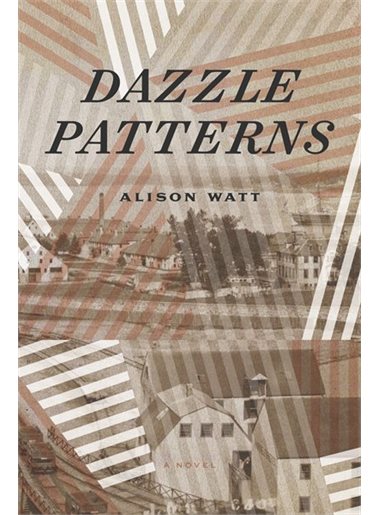Currently pretty distracted with trying to get ready for Friday’s flight, but today is the 100th anniversary of the Halifax explosion, and I can’t bear to let the day go by without telling you about my good friend Alison Watt’s debut novel, Dazzle Patterns, centred around that devastating event. (While this is Alison’s debut novel, she’s had several books of her poetry published and an earlier memoir of hers won the Edna Staebler award for creative non-fiction.)

I wish I had time to give this engaging work the review it deserves, but instead, I’ve cut-and-pasted what I said about it on Facebook a few weeks ago:
“I downloaded a copy of my friend Alison Watt‘s new novel, Dazzle Patterns, from Kobo on the weekend and finished it last night. I’m going to buy a hard copy, and she’ll sign it for me later, but I was too impatient to wait to find it in the stores. And my impatience was justified. This is a beautiful, thoughtful, and very well-researched novel set in Halifax during World War I, just after the devastating explosion. Characters you will love move through challenging circumstances, explore possibilities for pursuing passions — romantic, sure, but also for art, craft, geology — and for balancing autonomy, individual choices within various communities. The settings delight as well, and of course Alison’s gorgeous prose — you can see her poet working here, but deftly, always surrendering to narrative demands. You will see Alison the painter as well in the novel’s visuality. Okay, yeah, I liked the book, and not just because she’s popped my name in the Acknowledgements. . . “
Around the same time, I left this comment on Sue (High Heels in the Wilderness)’s post on poetry and fiction from/set in World War I:
“Currently reading my good friend Alison Watt’s book Dazzle Patterns — set in World War I, in Halifax, the period just after the explosion. The protagonist is a young woman who’s working as a flaw checker in the glass works when the explosion happens — her fiancé is in the trenches at Passchendale, Arthur Lismer appears in the page (do you know his paintings of ship’s [sic!!] camouflaged by dazzle patterns?) teaching at the School of Art, and there’s a young man–a glassblower– who’s grown up in Canada but whose parents emigrated with him from Germany, so those complications you might imagine during wartime. . . . I think you’d like it.”
Please excuse the cobbled-together nature of today’s post, and I hope it might intrigue you just enough to check out the novel for yourself. It’s quite wonderfully rich, truly. Should you need more convincing, here’s a CBC Books article in which Alison talks a bit about her motivation for embarking on this work of historical fiction and of what she gleaned in the research and writing of it.
thanks! I posted this on my FB page and it reminds me I still need to grab me a copy!!
You'll enjoy it, I'm sure!
Thanks for posting this. I might have missed this book otherwise and it sounds wonderful!
Frances from Sidney
You're very welcome.
Thank you Frances! (I've also commented on facebook) for this support and for you encouragement over the years I was writing this book.
You're so welcome, Alison. Happy to spread the word about this, and congratulations to you!